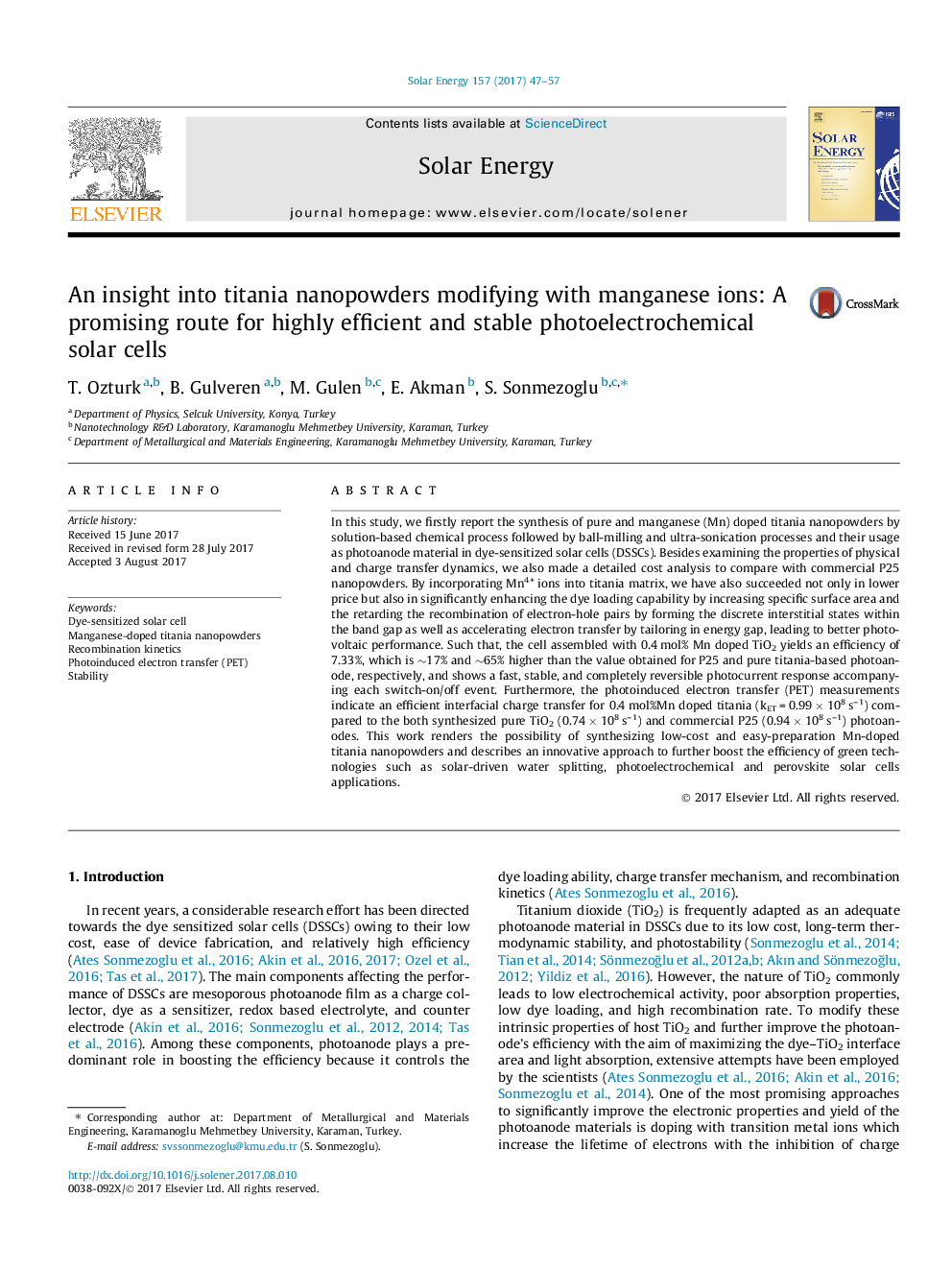| Article ID | Journal | Published Year | Pages | File Type |
|---|---|---|---|---|
| 5450852 | Solar Energy | 2017 | 11 Pages |
Abstract
In this study, we firstly report the synthesis of pure and manganese (Mn) doped titania nanopowders by solution-based chemical process followed by ball-milling and ultra-sonication processes and their usage as photoanode material in dye-sensitized solar cells (DSSCs). Besides examining the properties of physical and charge transfer dynamics, we also made a detailed cost analysis to compare with commercial P25 nanopowders. By incorporating Mn4+ ions into titania matrix, we have also succeeded not only in lower price but also in significantly enhancing the dye loading capability by increasing specific surface area and the retarding the recombination of electron-hole pairs by forming the discrete interstitial states within the band gap as well as accelerating electron transfer by tailoring in energy gap, leading to better photovoltaic performance. Such that, the cell assembled with 0.4Â mol% Mn doped TiO2 yields an efficiency of 7.33%, which is â¼17% and â¼65% higher than the value obtained for P25 and pure titania-based photoanode, respectively, and shows a fast, stable, and completely reversible photocurrent response accompanying each switch-on/off event. Furthermore, the photoinduced electron transfer (PET) measurements indicate an efficient interfacial charge transfer for 0.4Â mol%Mn doped titania (kETÂ =Â 0.99Â ÃÂ 108Â s-1) compared to the both synthesized pure TiO2 (0.74Â ÃÂ 108Â s-1) and commercial P25 (0.94Â ÃÂ 108Â s-1) photoanodes. This work renders the possibility of synthesizing low-cost and easy-preparation Mn-doped titania nanopowders and describes an innovative approach to further boost the efficiency of green technologies such as solar-driven water splitting, photoelectrochemical and perovskite solar cells applications.
Keywords
Related Topics
Physical Sciences and Engineering
Energy
Renewable Energy, Sustainability and the Environment
Authors
T. Ozturk, B. Gulveren, M. Gulen, E. Akman, S. Sonmezoglu,
